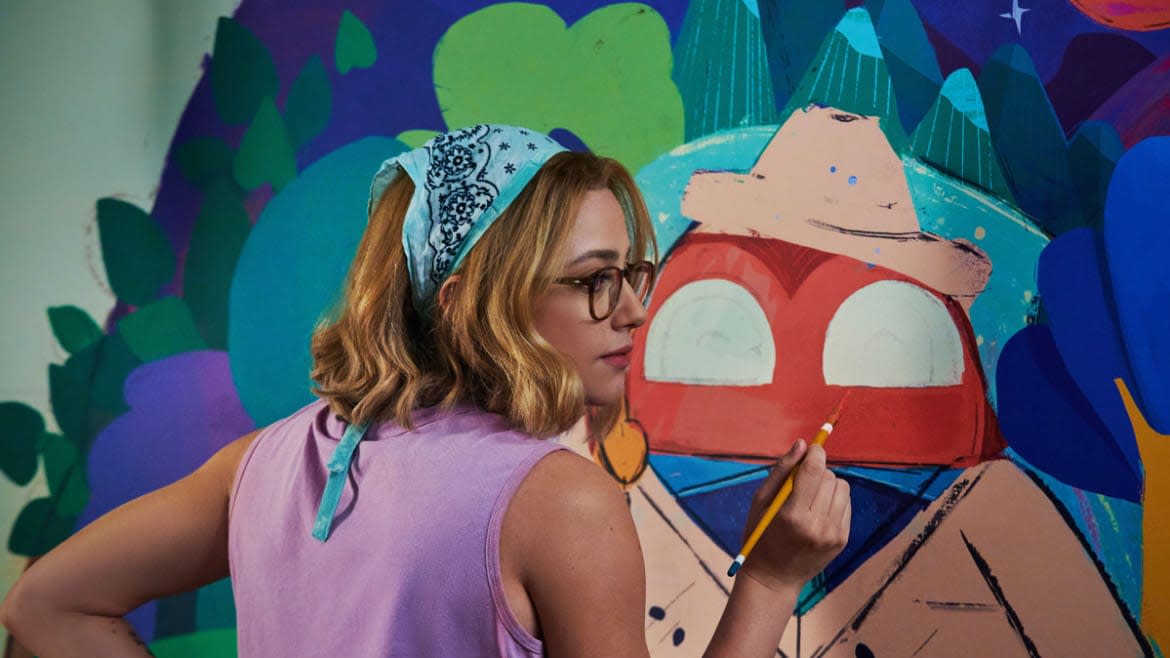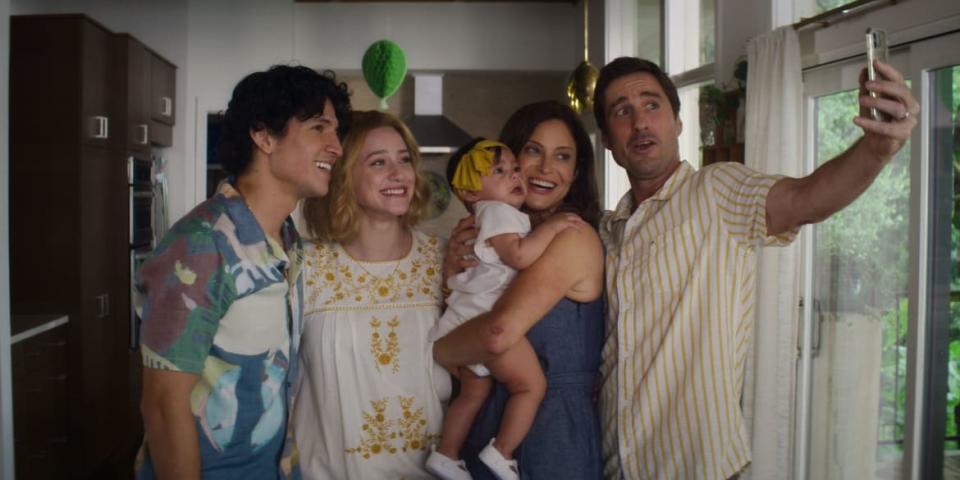‘Look Both Ways’ Is a By-the-Numbers Love Story—With a Super Nerdy Heart

- Oops!Something went wrong.Please try again later.
There’s something decidedly uncomfortable about the premise of Look Both Ways, Netflix’s latest hit original film. (Currently, it’s the streamer’s number one movie in the U.S.) The night of her college graduation, Natalie (Lili Reinhart) takes a pregnancy test. Weeks before, she hooked up with her best guy friend; now, she’s worried she might be having his baby.
In comes the movie’s primary gimmick: The storyline splits in two, with one following Natalie after her test is positive, the other after it’s negative. As opposed to committing to just one of these potential pathways, Look Both Ways has some fun with exploring both outcomes. Yet there’s something off about watching Natalie blossom into her baby-less, post-grad life in one timeline—while also seeing her move back home and be unemployed, single, and depressed in the other.

Look Both Ways explicitly refers to itself as “pro-[her] choice,” then showcases how miserable that choice can be. Which is fine! Plenty of women wind up pregnant and don’t choose to have an abortion. Lord knows that right now, plenty of women don’t even have the option to do so. But despite emphatically deciding to carry her baby to term, Natalie saddles up for the ride of motherhood with little drive, motivation, or enthusiasm.
The relative misery of her young-mom timeline makes Look Both Ways an uneven watch. But there’s still something endearing about its much frothier half, where Natalie moves to L.A. to pursue a career in animation. Giving Natalie such a professional endeavor (which appears in both timelines) without making it feel arbitrary, inauthentic, or false makes up for the story’s sad-mama contrivances.
Even though the studio that Natalie works for is more akin to start-up, Silicon Valley-style B.S. than actual intense, exhausting animation work, Natalie herself proves to be a big ol’ nerd. And it’s nice to see that, as a fellow big ol’ nerd. She draws cutesy cartoons about monsters and animals across both versions of her life, and has strong influences and opinions about her chosen field that actually aren’t thoughtless or pandering. (She doesn’t just shill for [insert new Netflix animated movie or show here, watch it now!], much to my surprise.)
One conversation in particular solidified Natalie (and screenwriter April Prosser) as a bonafide stan, and in turn won me over. Halfway through the movie, in the not-preggo timeline, Natalie and her co-worker/crush Jake—a guy who’s only in the animation industry for the money (???)—are walking through Little Tokyo. Natalie spots some merch based on an anime she loves and geeks out. This anime, A Whisker Away, is admittedly some well-deployed spon con; it’s a Netflix exclusive. But “it gave me the same feeling I had when I first saw Spirited Away,” Natalie says, which is one of the highest compliments you can pay any work of art.
Jake echoes her love for the Studio Ghibli masterpiece, before immediately losing Natalie, and my, respect: “I’ve been saying for years—somebody should make a live-action remake of Spirited Away.”
Anime King Hayao Miyazaki’s Cursed Dreams
What. What. No. What. Natalie’s answer was about to make or break this movie I was still on the fence about. Reinterpreting a work of art into another medium isn’t verboten; a perfect book can become a perfect movie. But what do we gain from someone taking a Picasso painting and converting it into a sculpture? What benefit is there to retelling The Giving Tree as a comic strip? Taking an iconic work of one medium and transposing it onto another, similar medium rarely benefits anyone. It just reaffirms the status and stature of the original creation, and it invalidates the redux immediately.
Natalie, thank goodness, gets this. The disgust she feels toward Jake’s quip is palpable. She has to walk away, lest she yell at him in the middle of Little Tokyo. When he catches up, he interrogates her: What’s the problem?
“Making a live-action remake of an animated film,” she seethes, “is like trying to tell somebody about your dream that you had last night. The magic never translates. It never works.”
Animation, she goes on, “conveys what reality can’t.” She’s right. This is the obvious, yet often unstated power of this gorgeous, dream-weaving medium. As it goes on to reference animators like Tex Avery, Chuck Jones, and the historically important but unsung Tissa David as Natalie’s influences, Look Both Ways was doubling down: Natalie is on top of her game.
It’s the kind of authenticity that I wouldn’t expect from a movie like this one, which forces its heroine to completely upheave her life for disingenuous plot reasons. Natalie may not give much of a crap about being a mom, despite deciding to become one in her darker timeline. But she definitely gives a lot of craps about the field of animation no matter what, and that was enough to keep this skeptical baby right here on board.
Get the Daily Beast's biggest scoops and scandals delivered right to your inbox. Sign up now.
Stay informed and gain unlimited access to the Daily Beast's unmatched reporting. Subscribe now.

